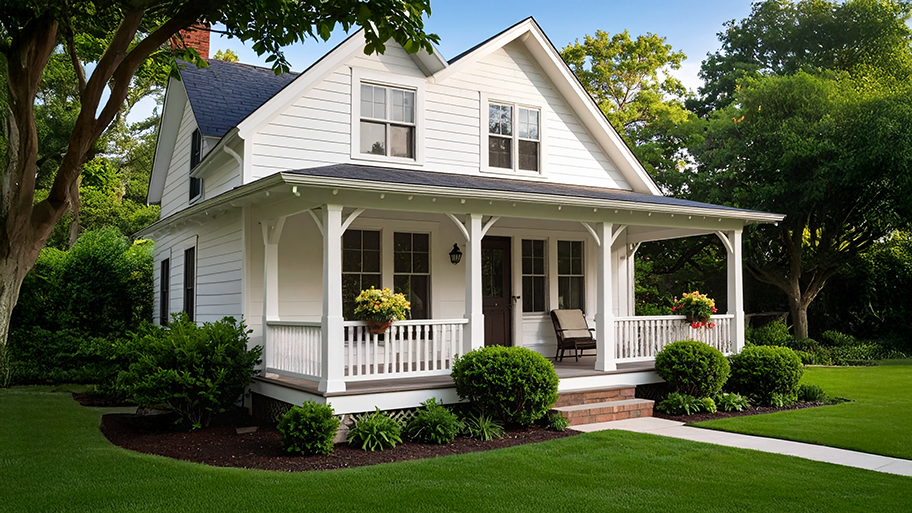
The cost of asbestos testing varies based on location, property size, test type, and other factors. Here’s a breakdown of the costs to conduct an asbestos survey.
Finding asbestos pipe insulation in your home is a fixable problem


Asbestos pipe insulation can appear in homes built up until the 1980s.
Asbestos wrap insulation has a light gray or gray-white color.
Homeowners should not try to remove it themselves.
Professionals have safety gear to handle asbestos pipe insulation.
Some pros may recommend encapsulating the pipe insulation.
When you own an older home or are preparing to purchase one, you will probably pay close attention to the design of various rooms. (No avocado green appliances, please!) At the same time, you should note any original construction materials in use in the home, watching for dangerous items like asbestos in flooring, ceiling tiles, or even insulation on pipes. So, what does asbestos pipe insulation look like? If you see a gray-white wrap over your pipes, it is time to investigate further and potentially call in the pros.
Recognizing early warning signs is important, but figuring out the right fix isn't always simple. Delaying professional help or attempting complex DIY repairs can lead to further damage and increased costs. With our network of local pros, you can hire a skilled professional to assess the issue and recommend the best solution.
Asbestos pipe insulation appears as a light gray or white-gray wrap that goes around your water pipes, especially hot water pipes. Although it is more common in industrial settings, it will appear in some older homes, too. Asbestos pipe insulation most often appears on the straight length of water pipes; however, it can appear on elbow pipes and valves attached to the pipes, too.
You should never peel back the white-gray wrap yourself, but if some of it is loose, you will see a multilayer material underneath. This material resembles corrugated paper or cardboard. It may have a honeycomb design on the interior.
Some fiberglass pipe insulation materials have a similar exterior look to asbestos pipe insulation, such as a white-gray outer material that resembles paper. On the interior, however, you should see a pink or yellow fiberglass material instead of corrugated material.
Again, because of the dangers of asbestos, you should never poke holes in this material or move it around to try to determine whether you are looking at fiberglass or asbestos pipe insulation. If unsure, let professionals inspect the space for you.
If your home has asbestos pipe insulation, it is possible that you may have other types of asbestos in your home. Here are some common questions related to asbestos insulation.
What does asbestos insulation look like inside your home? As pipe insulation, it often is a wrap. For attic insulation, it can be a fluffy loose-fill material, a spray-on material, material in rolls, and material found in blocks.
Where is asbestos found when used as insulation? Beyond wrapping around water pipes, it frequently appears inside attics or walls.
What does asbestos look like in insulation? The fibers in asbestos insulation look a bit like cotton candy, featuring a grayish-brown or silvery-gold color. Asbestos insulation often appears in clumps when used as a loose-fill insulation, and it resembles corrugated paper in wrap insulation.
Does rockwool insulation contain asbestos? Older loose-fill rockwool-branded insulation may contain asbestos; however, rockwool insulation can refer to a style of insulation, also called mineral wool. Some manufacturers that made a similar type of insulation did not add asbestos. Testing is the best way to be certain if your rockwool material represents a dangerous type of insulation.

As with any type of material that contains asbestos, pipe insulation with asbestos is a potential cancer-causing material. Exposure could lead to mesothelioma cancer, lung cancer, and more types of cancer.
Microscopic asbestos fibers can enter the air when someone disturbs the material, ending up in the lungs of a victim. People who inhale asbestos fibers often do not realize it. It can take multiple decades for the asbestos fibers to cause cancer in victims. There are no symptoms at the time someone inhales the fibers, which is why asbestos exposure is so dangerous. It is a ticking time bomb with no signs of what it is doing to the body until someone becomes ill.
Signs of asbestos in a house and potential asbestos exposure are possible for any home built in the 1980s or earlier. Because asbestos does not burn, it was a popular material for use in commercial buildings and homes. Manufacturers began using asbestos in construction materials in the 1850s, so this dangerous material could appear in many different older homes, unless a previous owner removed it.
The Environmental Protection Agency (EPA) did not ban new asbestos products until 1989, even though the dangers of asbestos were well-known by 1950.

If you think you have asbestos pipe insulation, do not disturb it or attempt to remove it yourself. As long as you do not disturb it, the dangerous particles will not become airborne and put your family at risk.
That does not mean you should just ignore it, either, as someone may inadvertently disturb it later. Instead, reach out to a local asbestos testing company to do an inspection. The professional inspector can let you know exactly what you have and what steps to take next.
Perhaps you do not have dangerous insulation, even though it looks like asbestos pipe insulation; in that case, paying for an inspection can give you peace of mind. Asbestos testing cost averages just shy of $500, although you could pay anywhere from $100 to almost $2,000, depending on the time required to do the inspection properly.
If the testing company says that you have asbestos, you should always call a professional to neutralize it. The professional has the protective gear and expertise required to remove this material safely without exposing anyone to the dangerous asbestos fibers.
There is a cost related to hiring a professional to remove asbestos. It is important, however, to bring in a pro to maintain a safe environment. Additionally, some municipalities or states have regulations and laws that prevent homeowners from trying to remove any type of asbestos material themselves. You could face fines for trying to do the work yourself.
Asbestos removal cost averages about $2,200, but it can range from $450 to $6,000. If you only need to remove asbestos pipe insulation from one or two places, you probably will have a lower cost than if the professional must remove insulation from several pipes in awkward working locations.
Beyond removal, some professionals may advise on how to encapsulate asbestos pipe insulation. Encapsulating can include:
Applying special paint
Using duct tape
Attaching a special fabric
Using a penetrating encapsulant liquid
Coating with a durable material
Although encapsulation sounds like a safer option, it still requires the work of a local asbestos removal company. During the encapsulation process, the professional may disturb the asbestos pipe insulation, causing fibers to become airborne. This process also may make it far more difficult to remove the pipe insulation later.
From average costs to expert advice, get all the answers you need to get your job done.

The cost of asbestos testing varies based on location, property size, test type, and other factors. Here’s a breakdown of the costs to conduct an asbestos survey.

Discover the cost to replace asbestos siding, including key cost factors, and tips to help homeowners budget for safe and effective siding replacement.

Get clear answers on asbestos tile removal cost, including average prices, cost factors, and tips to save money on safe, professional removal.

Learning how to tell if a popcorn ceiling has asbestos might involve looking for clues. However, the most accurate option is to use a kit for a physical test.

Knowing how to clean asbestos can ensure that you, your family and your neighbors remain safe when working with materials that could contain asbestos.

There are ways to cover asbestos siding that make it safer, but it is always going to be safest to have a professional company perform the required tests and remove it.